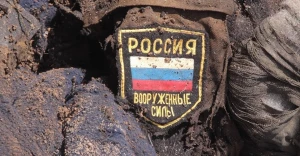
F-16s would allow destroying Russian ships at missile launch sites - military expert Serhiy Zgurets
F-16 aircraft can carry Harpoon missiles capable of destroying Russian ships and boats at launch sites
Russian strikes on Lviv and weapons from Bulgaria
At night on June 6, Russia struck at Ukraine, launching Kalibr cruise missiles from submarines and surface carriers in the Black Sea. There were several groups of missiles. At first, they were heading north, toward Kyiv, along the Dnipro riverbed, to take advantage of the terrain and sneak past our air defense, and then abruptly changed course to the west, where Ukrainian air defense and aircraft destroyed 7 of the 10 cruise missiles.
The rest hit civilian objects in Lviv. In particular, a building was heavily damaged, killing 10 people and injuring more than 40 others.
In addition to SAMs, Mi-29 and Su-27 fighter jets were also deployed to destroy the rockets, but their radars and missiles are not able to effectively counter Russian cruise missiles. The Air Force Command has once again emphasized that it would be extremely useful to have, in particular, F-16s with sensitive radars and more powerful missiles capable of destroying enemy cruise missiles.
Given that these fighter jets can carry Harpoon missiles, which can destroy Russian submarines and ships at their launch sites, the role of F-16s would be extremely important.
In addition, more air defense systems are needed. There are states that have a stockpile of S-300s and missiles for them, including Bulgaria, where Volodymyr Zelenskyy visited. After the meeting, he and the Bulgarian president signed a number of documents, including on cooperation in the defense sector. Bulgaria has 8 S-300 divisions.
Last year, Ukraine asked for them. Then the US offered to buy the systems for USD 200 million and then transfer NASAMS to Bulgaria. The Bulgarians refused, because NASAMS would have taken some time to transfer. After the talks between the presidents, it is possible that the Bulgarians will change their approach to the maintenance of the complexes and transfer them to Ukraine. Bulgaria provides substantial assistance to Ukraine, particularly with ammunition, because it has a powerful industry. There is also other equipment that can be provided to Ukraine.
Documenting Russian war crimes
Oleksandr Ruvin, director of Kyiv Scientific Research Institute of Forensic Expertise, said that the research institute inspects the sites of shelling and determines the damage. Experts were present at almost all the hit sites. First of all, it is necessary to examine each object, determine the damage, weapons, fire effects, and trace studies. These are 5-6 different areas of expertise. Engineers, explosives experts, and ecologists are working in the area where the hydroelectric power plant was blown up. A number of examinations have been ordered to determine the consequences of the destruction. The places, time of explosives’ placement, and technology have been roughly established. The pre-trial investigation authorities will soon provide all the information. They are studying the ground, water, air, what happened to the flora and fauna. In the near future, they will determine the amount of damage and how to restore the hydroelectric power plant. All the samples have been taken and many samples have been studied. They are studying the fertility of the land and how to improve it. In total, more than 30,000 examinations have been ordered at the sites of attacks. Most of them have been completed, but there are large objects, such as high-rise buildings.
Countering Russian drones and the number of drones launched by Russia
Oleksiy Hromov, Deputy Chief of Operations of the Ukrainian General Staff, highlighted that Russia employs various types of UAVs, including Shahed drones. He mentioned that Russia acquired 1,800 Shahed drones from Iran and has utilized around 1,600 of them. Additionally, the Izhevsk Mechanical Plant has manufactured up to 900 of these drones, with 850 of them already deployed.
The Ukrainian military has reported the extensive use of UAVs by Russia, including a significant number of Lancets. Consequently, countering the diverse range of UAVs has become a pressing issue. The Ukrainian forces employ electronic warfare measures to address this challenge.
Maksym Dizhechko, the director of Unwave, emphasized his company's commitment to providing the Ukrainian Defense Forces with necessary tools to counter these drones, because Russia has many of them, and China is at its side. Ukrainian defenders are provided with anti-drone rifles and trench electronic warfare. If these anti-drone rifles had been developed a decade ago, Ukrainian troops would have had more effective means to counter all types of UAVs. However, at present, the possibilities are limited, and there hasn't been sufficient focus on electronic warfare, particularly at a smaller scale. He emphasized that with proper funding, there is potential for expansion and improvement in this area.
Currently, the company produces about 20 to 30 anti-drone guns and other equipment per month. However, there are problems with the supply of components, because they are made in China. Currently, there is a shortage of antennas for countering drones, and no one seems to have them readily available. However, if there were adequate funding and a proper understanding of the army's needs, entrepreneurs would be capable of swiftly and effectively addressing these requirements. Unfortunately, there has been a lack of strategy in this area, but efforts are now underway to develop one. No one anticipated that civilian drones would be used in the war. FPVs are developing very quickly and are promising. The state can say what is needed and order it. But there must be private funds and investments that will absorb all the developments for the front. No company will be able to scale quickly even if it has funding. The army can understand this, but conveying the message can be challenging due to bureaucracy. The Ministry of Digital Transformation coordinates and holds meetings on this issue.
- News












































